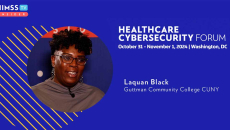Career Planning
How HIMSS education and programs, such as CIO Connect, can benefit the professional development of healthcare IT specialists at all levels, per Isaiah Nathaniel, SVP and CIO at Delaware Valley Community Health.
Robert Crowe, EVP of Per Diem and Local Workforce Strategies at Medical Solutions and founder of Matchwell, says hospitals should know the fastest growing workforce segment is seeking work/life harmony.
The International Committee of the Red Cross's Javier Elkin discusses his personal journey from neuroscience research to government and nonprofit work specializing in science, health and technology.
No textbook is required when real-life cyber risks are this serious, says Laquan Black, assistant professor of health information technology at Guttman Community College CUNY.
Healthcare chief AI officers have to have rare combination of skills, just as complex as the artificial intelligence and machine learning technologies they oversee.
Nursing and IT
Healthcare leaders should address the stress of AI and share roadmaps to gain buy-in from nurses, says Dr. Iman Abuzeid, CEO and cofounder of Incredible Health.
A 2024 HIMSS Changemaker, Epic's chief nurse evangelist, Emily Barey, says her journey from studying political science, to nursing, to working for a software company started with a willingness to try new things and ask for help along the way.
The fifth group to do so comprises 11 startups, all helping enable digital innovations in therapeutic delivery - from the supply chain to the patient interface, says Naomi Fried, founder and CEO of the accelerator program.
A small but growing number of health systems have entity services staffed by a variety of these "mini" chief information officers. John P. Donohue, an EIO at Penn Medicine, offers a closer look at this emerging role, often staffed by hiring CIOs from small community hospitals.









